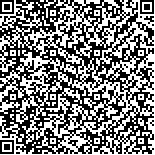| 引用本文: |
高凡,朱明芳,杨逸璇,吴淑辉,李翠,张娟娟.石榴皮多酚乳膏抑制NLRP3炎性小体抗炎抗痤疮的机制研究[J].湖南中医药大学学报,2021,41(7):1003-1009[点击复制] |
|
| |
|
|
| 本文已被:浏览 3013次 下载 973次 |
| 石榴皮多酚乳膏抑制NLRP3炎性小体抗炎抗痤疮的机制研究 |
| 高凡,朱明芳,杨逸璇,吴淑辉,李翠,张娟娟 |
| (湖南中医药大学第二附属医院, 湖南 长沙 410005) |
| 摘要: |
| 目的 探究石榴皮多酚乳膏抑制NOD样受体热蛋白结构域相关蛋白3(NOD-like receptor thermal protein domain associated protein 3,NLRP3)炎性小体抗炎抗痤疮的机制。方法 将42只雌雄各半SPF级SD大鼠随机分为空白组、模型组、基质组、石榴皮多酚低中高浓度组、克林霉素组,每组6只。除空白组外,其余各组构建大鼠耳廓痤疮模型。造模完成后于大鼠耳廓予各被试因素干预,2次/d,连续用药2周,末次用药24 h后取材。肉眼观察皮损变化;HE染色观察组织病理改变;免疫组化法检测皮损中NLRP3、凋亡相关的斑点样蛋白(apoptosis-associated speck-like protein containing a CARD,ASC)、半胱氨酸天冬氨酸蛋白酶1(Caspase-1)、基质金属蛋白酶2(matrix metallo proteinase-2,MMP-2)的表达情况;ELISA法检测血清样本中白细胞介素-1β(interleukin-1 beta,IL-1β)和白细胞介素18(interleukin-18,IL-18)的水平。结果 肉眼观察可见空白组耳廓表面正常,模型组和基质组有皮肤暗红、肿胀、变硬、痂皮及丘疹等炎症表现,石榴皮多酚各浓度组及克林霉素组较模型组皮损可见不同程度改善。病理结果显示,空白组组织正常,模型组及基质组表皮角化、真皮内炎症细胞浸润、皮脂腺增生,各治疗组上述表现不同程度减轻。免疫组化示,与空白组相比,模型组和基质组大鼠NLRP3、ASC、Caspase-1、MMP-2表达升高(P<0.05);与模型组相比,石榴皮多酚各浓度组及克林霉素组NLRP3、Caspase-1水平明显降低(P<0.05),石榴皮多酚中、高浓度组ASC表达降低(P<0.05),石榴皮多酚低、高浓度组MMP-2表达下降(P<0.05)。ELISA结果显示,模型组较空白组大鼠血清IL-1β、IL-18含量明显升高;石榴皮多酚各组及克林霉素组较模型组明显下降(P<0.05)。结论 石榴皮多酚乳膏能有效改善SD大鼠痤疮模型的炎症反应,可能与其抑制NLRP3炎性小体抗炎抗痤疮的机制有关。 |
| 关键词: 痤疮 石榴皮多酚 炎症反应 NLRP3炎性小体 白细胞介素-1β 白细胞介素-18 |
| DOI:10.3969/j.issn.1674-070X.2021.07.006 |
| 投稿时间:2021-02-28 |
| 基金项目:湖南省卫生健康委员会科研计划项目(20201862);长沙市科技计划项目(kq1901097);湖南省高层次卫生人才“225”工程培养项目(湘卫函[2018]445号);湖南省研究生科研创新项目(CX20190548);湖南中医药大学研究生创新课题(2020CX06)。 |
|
| Study on Anti-inflammatory and Anti-acne Mechanism of Pomegranate Peel Polyphenol Cream Inhibiting NLRP3 Inflammasome |
| GAO Fan,ZHU Mingfang,YANG Yixuan,WU Shuhui,LI Cui,ZHANG Juanjuan |
| (The Second Affiliated Hospital of Hunan University of Chinese Medicine, Changsha, Hunan 410005, China) |
| Abstract: |
| Objective To explore the anti-inflammatory and anti-acne mechanism of pomegranate peel polyphenol cream inhibiting NOD-like receptor thermal protein domain associated protein 3 (NLRP3) inflammatory corpuscle. Methods 42 male and female SPF SD rats were randomly divided into blank group, model group, matrix group, pomegranate peel polyphenol low-medium-high concentration group and clindamycin group, with 6 rats in each group. Except the blank group, the other groups established rat auricle acne model. After the completion of the model, the rats were intervened by various factors, twice a day, for 2 weeks, and the samples were taken 24 hours after the last administration. The changes of skin lesions were observed with naked eyes; histopathological changes were observed by HE staining; the expression levels of NLRP3, apoptosis-associated speck-like protein containing a card (ASC), Caspase-1, matrix metalloproteinase-2 (MMP-2) were detected by immunohistochemistry; the levels of interleukin-1β (IL-1β) and interleukin-18 (IL-18) in serum samples were detected by ELISA. Results The auricle surface of blank group was normal, and the skin of model group and matrix group was dark red, swollen, hardened, scab and papule. Compared with model group, the skin lesions of pomegranate peel polyphenols and clindamycin group were improved in different degrees. Pathological results showed that the blank group was normal, while the model group and matrix group had keratinization of epidermis, infiltration of inflammatory cells in dermis and hyperplasia of sebaceous glands, which were alleviated in different degrees in each treatment group. Immunohistochemistry showed that compared with the blank group, the expression levels of NLRP3, ASC, Caspase-1 and MMP-2 in model group and matrix group were higher (P<0.05); compared with the model group, the levels of NLRP3 and Caspase-1 in pomegranate peel polyphenol concentration groups and clindamycin group were significantly decreased (P<0.05), ASC expression in pomegranate peel polyphenol middle and high concentration groups was decreased (P<0.05), MMP-2 expression in pomegranate peel polyphenol low and high concentration groups was decreased (P<0.05). The results of ELISA showed that the content of serum IL-1β and IL-18 in model group was significantly higher than those in blank group; compared with the model group, pomegranate peel polyphenol concentration groups and clindamycin groups decreased significantly (P<0.05). Conclusion Pomegranate peel polyphenol cream can effectively improve the inflammatory response of SD rat acne model, which may be related to its anti-inflammatory and anti-acne mechanism of inhibiting NLRP3 inflammatory corpuscle. |
| Key words: acne pomegranate peel polyphenols inflammatory reaction NLRP3 inflammasome interleukin-1β interleukin-18 |
|

二维码(扫一下试试看!) |
|
|
|
|




